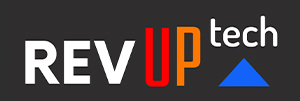Introduction to iOS SDK
Learn how to build and run your first apps on iOS using the Swift programming language. This two-day, hands-on course teaches you the common tools, interface elements, and design patterns you need to build apps for iPhone and iPad. It includes detailed explanations of iOS technologies, hands-on use of Apple’s development tools, and coding exercises in Swift that use common iOS frameworks.
2 days - $1,295.00
This course is taught by an expert Apple Certified Instructor.
Prerequisites:
Basic understanding of the macOS is required.
Course Outline
Getting Started
Joining the Apple iOS Developer Program
Installing Xcode and the iOS SDK
A Guided Tour of Xcode
An Introduction to Xcode Playgrounds
Interface Builder Basics
How to navigate through Interface Builder,
Add elements onto the canvas
Interact with those elements in the code.
Displaying Data
Use Interface Builder to create the beginnings of an app
Adding labels and images.
Controls in Action
Use Interface Builder to add buttons
Add Switches and sliders to a scene
Create actions and outlets
Writing basic code
Learning how all the tools work together
Auto Layout and Stack Views
Fundamentals of Auto Layout for building precisely designed user interfaces
Segues and Navigation Controllers
How to use segues to transition from one view controller to another
Define relationships between view controllers
Navigation controllers and you managing scenes that display related or hierarchical content
Tab Bar Controllers
How to use tab bar controllers to organize different kinds of information or different modes of operation
View Controller Life Cycle
Learn more about the view controller life cycle to understand the potential of this important class
Building Simple Workflows
Tie together the concepts to design simple workflows and familiar navigation hierarchies
App Anatomy and Life Cycle
Explore the different life cycle states and the delegate hooks for executing logic as the app moves through each state
Model View Controller
How to organize files, structures, and classes into a design pattern called Model- View-Controller
Table Views
Basics of creating table views in an iOS app
Intermediate Table Views
How to customize table views by creating custom cells
Dynamically inserting and removing cells
Using static table views to present forms or other non-changing lists
Swiping to delete cells
Saving Data
How to implement data persistence using NSCoding,
Protocols for saving files to the app's Documents directory
System View Controllers
Discover how to incorporate a variety of system view controllers for displaying alerts
Sharing content
Sending messages
Accessing the camera and photo library on an iOS device
Building Complex Input Screens
How to use a combination of static and dynamic table views.
Use controls and views to build custom workflows
Working with the Web: HTTP and URLSession
How web data is sent and received
How URLs work
How to fetch data for use in your app
Working with the Web: Decoding JSON
How to read and write basic JSON
How to convert JSON to and from Swift types and into your own custom model objects
Working with the Web: Concurrency
Become familiar with the concurrency system in iOS and learn how to make sure code that updates the user interface is executed in the right place


